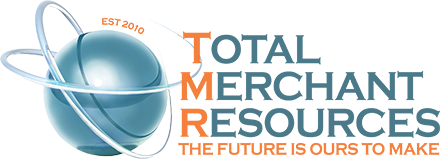
Leasing equipment can be a smart move for your business. Instead of spending much money upfront to buy machines or tools, you can lease them. This helps you save money and keep your options open for upgrades or changes.
Ready to start leasing? This guide will walk you through each step to help you lease equipment smoothly and efficiently.
Understanding Equipment Leasing Basics
Leasing equipment means renting it for a set period instead of buying it. This simple arrangement helps businesses use the latest equipment without a considerable initial cost. You pay a monthly fee when you lease, which usually covers maintenance and repair.
There are two main types of leases: operating leases and finance leases. An operating lease is short-term. You rent the equipment, use it, and return it at the end of the lease. This is great if you need equipment for a short project or want to upgrade to the newest models. A finance lease, on the other hand, is more like buying. You lease the equipment over a longer term and often have the option to buy it at the end.
Leasing is flexible and can be tailored to your business needs. Some leases have trade-up options, so you can always have the latest technology. It’s also an excellent way to manage your budget since you can spread the cost over time. Understanding these basics can help you decide if leasing is right for your business.
Choosing the Right Equipment
Selecting the right equipment to lease is an important step. First, identify what type of equipment you need. List the tasks it will perform and the features you require. Consider your business goals and how the equipment will help you achieve them.
Once you know what you need, research different makes and models. Look at reviews and compare features. It’s also helpful to talk to other businesses that use similar equipment. They can provide insights and recommendations based on their experiences.
Another critical factor is the supplier. Choose a reputable company that offers good customer service and support. Ask about their maintenance and repair policies. It’s important to know who will be responsible for fixing any issues.
Consider the lease terms as well. Check for options for upgrading or switching equipment during the lease period. This flexibility can be valuable if your needs change. Choosing the right equipment ensures you get the most value from your lease and helps your business run efficiently.
Navigating Lease Agreements
Navigating a lease agreement can feel tricky, but it’s crucial for getting the best deal. Start by reading the entire contract carefully. Make sure you understand all the terms and conditions. See details on payment schedules, maintenance responsibilities, and early termination clauses.
You should also check the length of the lease. Ensure the term aligns with how long you need the equipment. Some leases include flexible options, like early termination or extension features. Knowing these options can help you make a better decision.
Pay close attention to the costs involved. The monthly payment is not the only expense. There might be additional fees for shipping, installation, and insurance. Ask the leasing company to break down all the costs so there are no surprises later.
Don’t be afraid to negotiate. Sometimes, leasing companies adjust terms to make the deal more favorable for you. If you’re uncomfortable with a part of the agreement, consider it and see if they can make changes.
By carefully navigating your lease agreement, you secure a deal that fits your business needs and budget.
Maintaining and Managing Your Leased Equipment
Once you have leased the equipment, it’s vital to maintain and manage it properly. This ensures the equipment stays in good condition and works efficiently for your business.
First, follow the manufacturer’s maintenance guidelines. These are often included in the lease agreement. Performing regular maintenance helps prevent breakdowns and costly repairs. Keep a schedule and log all maintenance activities to stay organized.
Next, train your team on how to use the equipment correctly. Proper use minimizes wear and tear and extends the life of the equipment. Have a supervisor who can ensure that the guidelines are being followed.
Another crucial part of managing leased equipment is staying in touch with the leasing company. Report any issues or malfunctions immediately. Most leases include maintenance and repair services, so don’t hesitate to use these benefits. It’s in your best interest to keep the equipment in top shape.
Finally, plan for the end of the lease. Decide whether you want to return the equipment, renew the lease, or buy it. Each option has pros and cons, so evaluate based on your current and future needs.
By maintaining and managing your leased equipment well, you ensure it supports your business effectively.
Conclusion
Leasing equipment offers a practical and flexible option for businesses that want to stay ahead without the hefty initial investment. Understanding the basics, choosing the right equipment, navigating lease agreements, and maintaining your leased items are crucial for a smooth experience.
A well-planned leasing strategy can help your business grow without overextending your budget. It allows you to access the latest technology and stay competitive. Proper management ensures you get the best performance from your leased equipment, making the entire process cost-effective and efficient.
Total Merchant Resources can guide you through every step if you’re ready to explore equipment leasing and merchant lending options tailored to your business needs. Contact Total Merchant Resources today to start your journey toward intelligent and effective equipment leasing.



